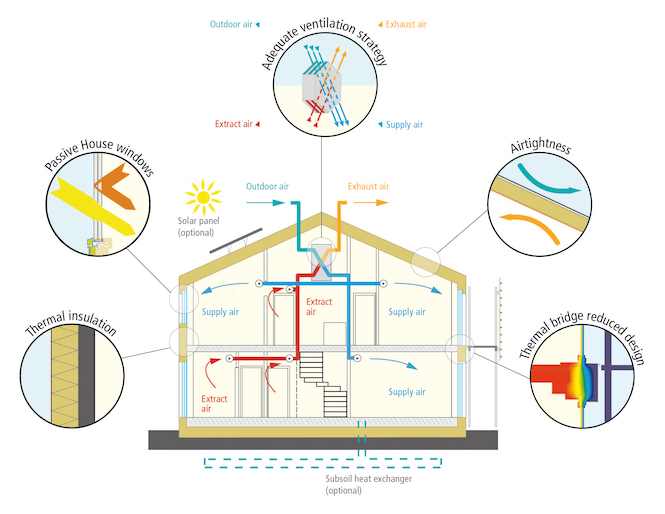Passive House (Passivhauz)
Did you know that 28% of global C0² emissions are from the operation of buildings (primarily heating and cooling)?
In response, the studio has recently shifted its focus towards high-performance, ultra-low energy, comfortable and healthy Passive House designs.
Here’s an example of a Passive House in Sydney, Australia. we designed.
Passive House is a voluntary standard—the most rigorous, energy efficiency standard in the world involving a highly insulated and air-tight building shell.
Passive House is true sustainable design which drastically reduces carbon emissions from your home.
By replacing the guesswork of “passive solar design” with rigorous modelling of high performance building shells, the energy efficiency and user comfort is definitively determined prior to construction.
There are no surprises or performance gaps, which means that your home will remain thermally and environmentally comfortable year-round, with rarely a need for heating or cooling.
One of the greatest benefits of a Passive House is a healthier house.
This is great news for people suffering from asthma or allergies.
Fresh, clean, filtered air is distributed throughout the building via a mechanical ventilation system, constantly replacing polluted indoor air and internally generated C02 (especially at night).
This reduces exposure to dust, allergens, pollen, odours, excess moisture and other pollutants.
A high-performance building envelope means that mould and interstitial condensation is eliminated within the building fabric.
Healthy, robust house. Healthy you.
After an initial pay-back period, a Passive House home will save you money for many years to come.
Low running costs and energy savings of up to 90 per cent (compared with typical existing buildings), can be achieved. Imagine never needing to pay those outrageous energy bills again!
Furthermore, carefully integrated technology and construction systems equals minimal maintenance which can also save thousands over the life of the building.
For more information see Passive House requirements and Australian Passive House Association .
